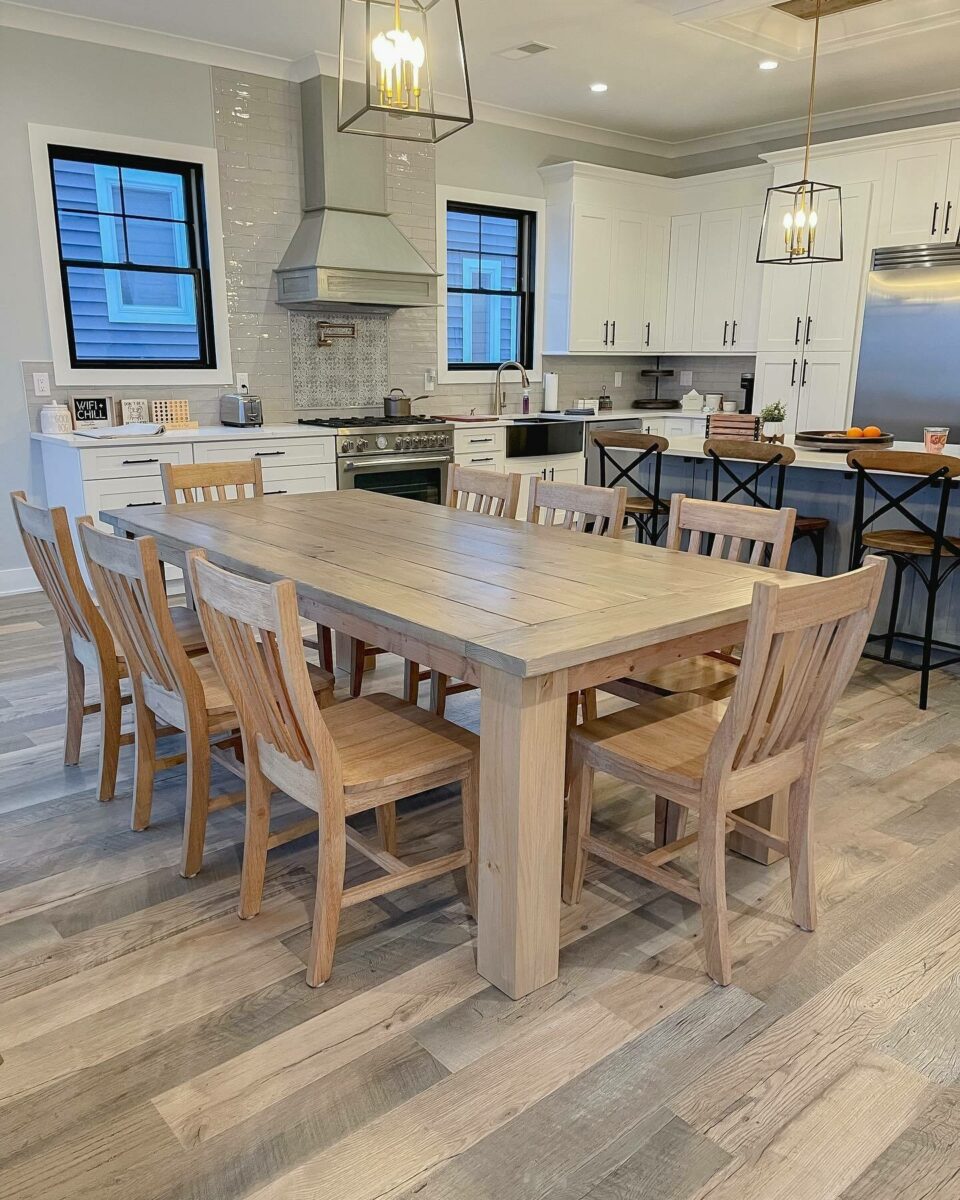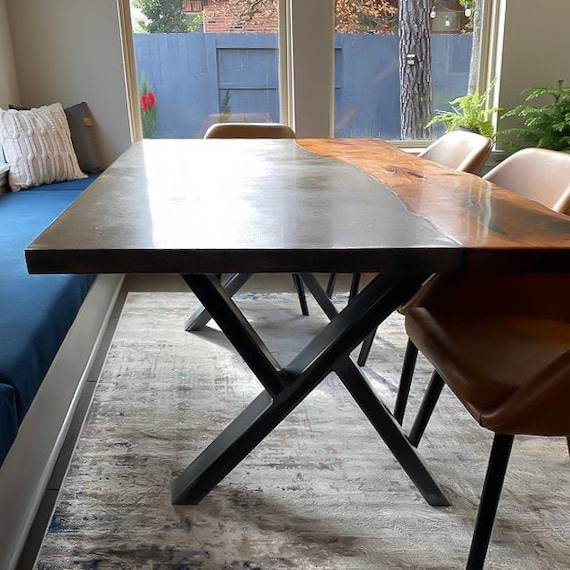Change Your Furnishings with Premium Dining Table Legs Wood Options
Change Your Furnishings with Premium Dining Table Legs Wood Options
Blog Article
Important Considerations for Picking the Right Table Legs Timber
Picking the suitable timber for eating table legs entails a nuanced understanding of numerous factors that influence both functionality and aesthetic charm. The option of wood kind, ranging from robust hardwoods to a lot more fragile softwoods, plays a crucial role in ensuring toughness and security. In addition, considerations concerning design, spending plan, and maintenance need to be thoroughly reviewed. Each of these aspects can drastically affect the general experience of your dining space. Comprehending how these factors relate is important for making an educated choice that meets your certain demands and choices - Dining Table Legs Wood. What considerations will you focus on in your option process?
Value of Wood Kind

Hardwoods, such as walnut, maple, and oak, are commonly favored for their toughness and resistance to put on. These kinds of wood offer a durable foundation that can endure daily usage, making them perfect for eating tables that experience frequent celebrations. On the other hand, softer timbers like pine might be a lot more vulnerable to damages and scrapes, which might not be ideal for high-traffic areas.
Additionally, the option of timber can also affect the convenience of maintenance. Some timbers require routine oiling or securing to maintain their look, while others may be a lot more flexible. Ultimately, picking the ideal wood kind involves stabilizing visual considerations with functional demands, ensuring that the table legs not only look enticing but also stand the test of time.
Evaluating Stability and Strength
When evaluating table legs, one should consider the stability and toughness they supply to the overall framework. The legs are essential in supporting the tabletop and ensuring the dining experience is secure and delightful. A secure table is vital for protecting against tipping or wobbling, which can result in spills or mishaps during dishes.
The choice of wood type significantly affects toughness. Woods such as walnut, maple, and oak are normally much more long lasting and robust than softwoods like yearn or fir. In addition, the density and design of the legs play a critical role; thicker legs or those with a conical layout can use better support and stability.

Aesthetic Factors To Consider
While performance is vital, the aesthetic charm of eating table legs can not be forgotten, as they considerably affect the overall layout and ambiance of the dining space. The option of layout, finish, and timber can improve or detract from the table's visual impact.

Surfaces additionally play a crucial function in aesthetic appeals. A natural surface can highlight the timber's innate beauty, while painted or tarnished legs can introduce shade and individuality right into the space. The proportion and scale of the legs family member to the tabletop and bordering furnishings must be taken into consideration to guarantee visual equilibrium and cohesion.
Ultimately, the dining table legs must not only offer a functional purpose but likewise contribute to a cohesive and welcoming ambience, making them an essential factor to consider in the general design of the eating area.
Maintenance Needs
To make sure long life and preserve the charm of wood dining table legs, routine maintenance is necessary (Dining Table Legs Wood). Wood is an all-natural product that can be susceptible to damage from wetness, heat, and use. Consequently, developing a routine care plan will substantially boost the longevity of your eating table legs.
Begin with routine dusting making use of a soft, lint-free cloth to eliminate dirt and particles that can scrape the surface area. For even more detailed cleansing, make use of a moderate soap solution and damp towel, avoiding excess dampness that might leak right into the wood. It is recommended to use a top quality wood polish or conditioner every couple of months to nurture the timber and keep its luster.
Deal with any type of scratches or damages quickly with proper timber filler or touch-up pens to avoid additional deterioration. By sticking to these upkeep needs, you will not only preserve the aesthetic allure of your wooden eating table legs yet additionally expand their useful life expectancy.
Budget Plan and Price Elements
Spending plan and price factors frequently play a crucial function in the decision-making procedure for choosing wood table legs. When assessing options, it is important to establish a clear budget plan that straightens with your overall furniture financial investment. The price of wooden table legs can vary considerably based on the kind of workmanship, wood, and layout complexity.
Woods such as cherry, oak, and walnut normally command higher costs as a result of their toughness and visual allure. In comparison, softer timbers like want may be extra inexpensive yet might not offer the exact same longevity. Furthermore, custom-made or artisan-crafted legs can incur added prices, reflecting the ability and time invested in their production.
It is additionally vital to think about the potential long-lasting worth of your financial investment. While selecting lower-cost materials may seem monetarily sensible at first, they may call for more frequent replacement or repairs, inevitably raising overall expenditure.
Therefore, balancing top quality and expense is essential. Prioritize products that fulfill your aesthetic choices while guaranteeing they fit easily within your spending plan, allowing you to produce a dining location that is both aesthetically enticing and functional.
Verdict
In verdict, picking the proper timber for eating table legs necessitates careful factor to consider of numerous variables, including timber kind, security, looks, maintenance, and budget plan. Eventually, a well-informed choice will improve the longevity and aesthetic charm of the dining table, making sure complete satisfaction and capability for years to come.
Picking the right kind of wood for dining table legs is essential for both visual allure and architectural honesty. Inevitably, picking the ideal wood type involves balancing visual considerations with sensible requirements, making certain that the eating table legs not just advice look attractive but likewise stand the Web Site test of time.
It is suggested to use a top quality timber gloss or conditioner every few months to nurture the timber and preserve its appeal.
The cost of wood eating table legs can vary dramatically based on the type of layout, wood, and craftsmanship intricacy.
In final thought, picking the proper timber for eating table legs demands cautious consideration of various aspects, including wood type, stability, appearances, upkeep, and spending plan.
Report this page